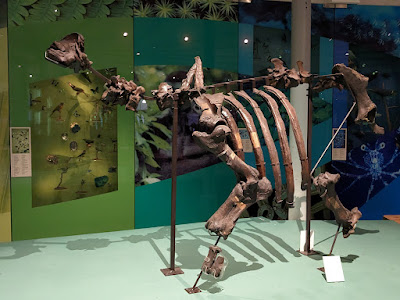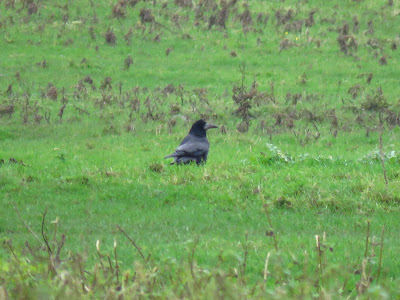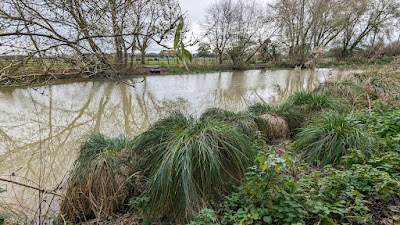I travelled to Leeds to visit the Leeds City Museum to research an upcoming walk series. There is a limit in the number of walks I can do holding an umbrella, so I've decided to visit Yorkshire museums on rainy Tuesdays (most museums close on Mondays). The building is pretty impressive and I was very pleasantly surprised. The museum is conveniently a 10 minute walk from the train station. My focus was the Life on Earth exhibit, although the Collectors Cabinet had a lot to keep me interested too.
These are my five highlights:
1. Giant Deer, Megaloceros giganteus. A most impressive complete skeleton greets you from a high plinth in front of the entrance of the exhibit. It has been displayed at the Museum for over 150 years and it originates from Lough Gur, near Limerick in Ireland. Peat bogs in Ireland yielded many remains of this species, with complete skeletons regularly found. The species was distributed from Ireland to Siberia during the Pleistocene, and the last dated specimens lived 12000 years old in Germany and 7000 years ago in Siberia. The species became extinct shortly after.
2. Heavy-footed Moa, Pachyornis elephantopus. This magnificent skeleton is in the Collectors' Cabinet gallery of the Museum. Moas became extinct shortly after humans colonised New Zealand. The Heavy-footed Moa lived in the lowlands of the South Island and had a diverse vegetarian diet that included coarse vegetation. There were nine species of moa. Although thought to be related to the Emus, Casowaries and Ostriches and regarded as Ratites, the flightless, heavy bodies evolved through convergent adaptation to a cursory lifestyle and moas are now considered to have their own order, Dinornithiformes. Moas even lack the vestigial wings of other flightless birds.
3. A Beaver skull from Wawne. There is a Beaver exhibit which sadly it replaced the Thylacine one, that I was looking forward to, but to compensate the Beaver skull shown in the exhibit comes from the village of Wawne, just north of Hull. Beavers got extinct in the UK centuries ago, but they have been reintroduced, legally or illegally in Scotland and England, and regarded as key in various rewilding projects. The skull is a very tangible reminder that Beavers thrived in East Yorkshire before the area was drained and rivers embanked. A Beaver dam preserved in peat can be seen at Skipsea, regarded to be 10,000 years old. Beavers are also thought to have given their name to Beverley (=Beaver Lake).
4. Dodo, Raphus cucullatus. Dodo remains are extremely rare, and there are no stuffed specimens or full skeletons, all display skeletons are composites of various bones. The display shows a partial skeleton. The white bones are casts from other existing bones, whilst the dark bones are the subfossils, so it is a very incomplete skeleton. The Dodo was an endemic flightless giant pigeon of the island of Mauritius, it became extinct in 1662 and subsequently became an icon of extinction. It's closest living relative is the Nicobar Pigeon.
5. The Armley Hippo, Hippopotamus amphibious. In 1851, workmen digging clay at a brickworks near the river Aire, uncovered some very large bones. The bones were identified by Henry Denny, the then museum curator, as belonging to a Hippo. Denny collected more bones in the area, over two years. The bones appeared to belong to three or four individuals and some were in positions suggested that whole carcasses had been deposited on a bend in the old river. Hippos lived in southern Britain during the last interglacial, the Ipswichian, about 120,000 years ago, when the climate was regarded as warmer than today's.
Some other highlights include a pair of Huias, a New Zealand bird species where male and female had very different bill shapes.












































































